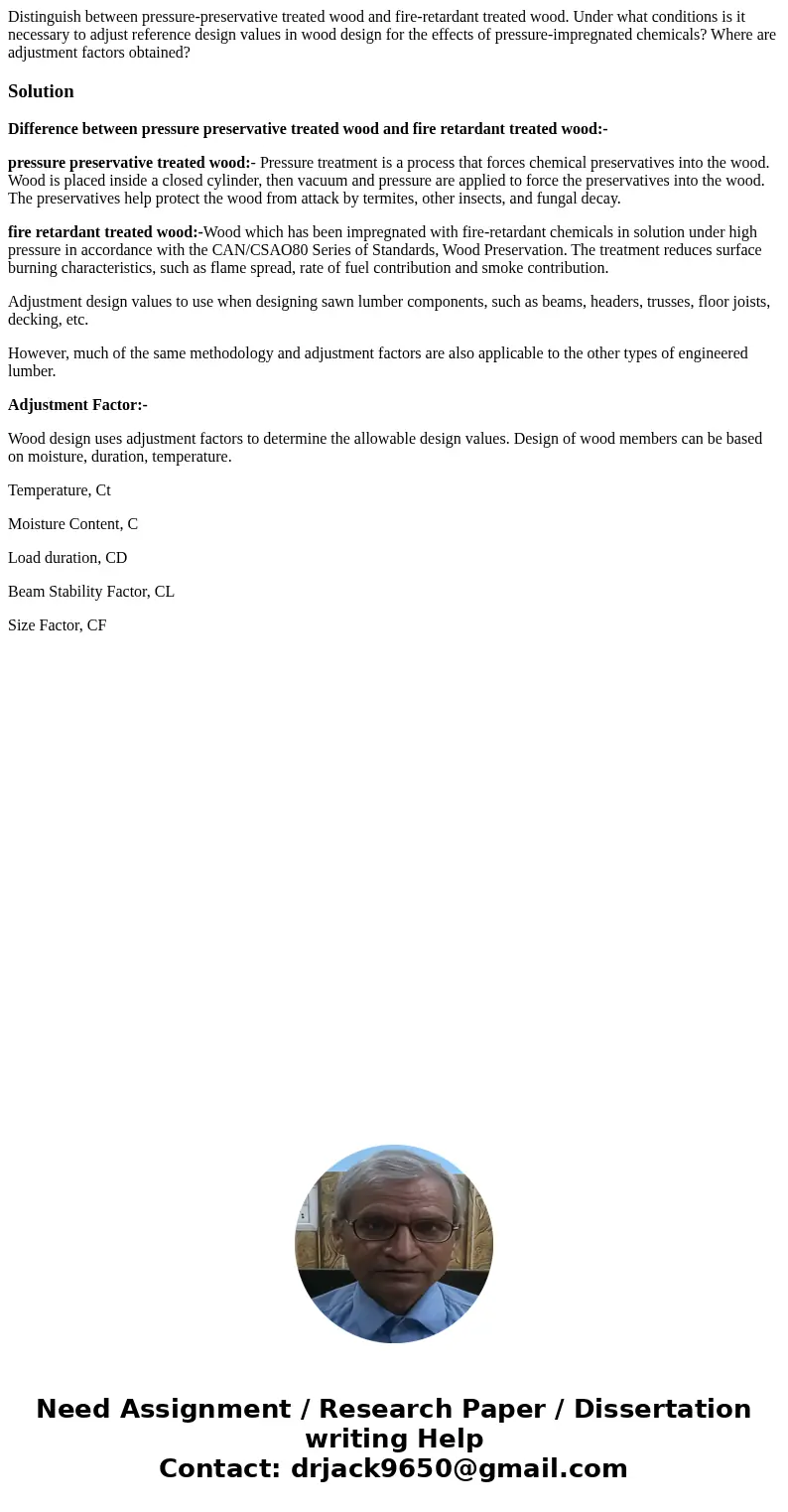Distinguish between pressurepreservative treated wood and fi
Distinguish between pressure-preservative treated wood and fire-retardant treated wood. Under what conditions is it necessary to adjust reference design values in wood design for the effects of pressure-impregnated chemicals? Where are adjustment factors obtained?
Solution
Difference between pressure preservative treated wood and fire retardant treated wood:-
pressure preservative treated wood:- Pressure treatment is a process that forces chemical preservatives into the wood. Wood is placed inside a closed cylinder, then vacuum and pressure are applied to force the preservatives into the wood. The preservatives help protect the wood from attack by termites, other insects, and fungal decay.
fire retardant treated wood:-Wood which has been impregnated with fire-retardant chemicals in solution under high pressure in accordance with the CAN/CSAO80 Series of Standards, Wood Preservation. The treatment reduces surface burning characteristics, such as flame spread, rate of fuel contribution and smoke contribution.
Adjustment design values to use when designing sawn lumber components, such as beams, headers, trusses, floor joists, decking, etc.
However, much of the same methodology and adjustment factors are also applicable to the other types of engineered lumber.
Adjustment Factor:-
Wood design uses adjustment factors to determine the allowable design values. Design of wood members can be based on moisture, duration, temperature.
Temperature, Ct
Moisture Content, C
Load duration, CD
Beam Stability Factor, CL
Size Factor, CF

 Homework Sourse
Homework Sourse